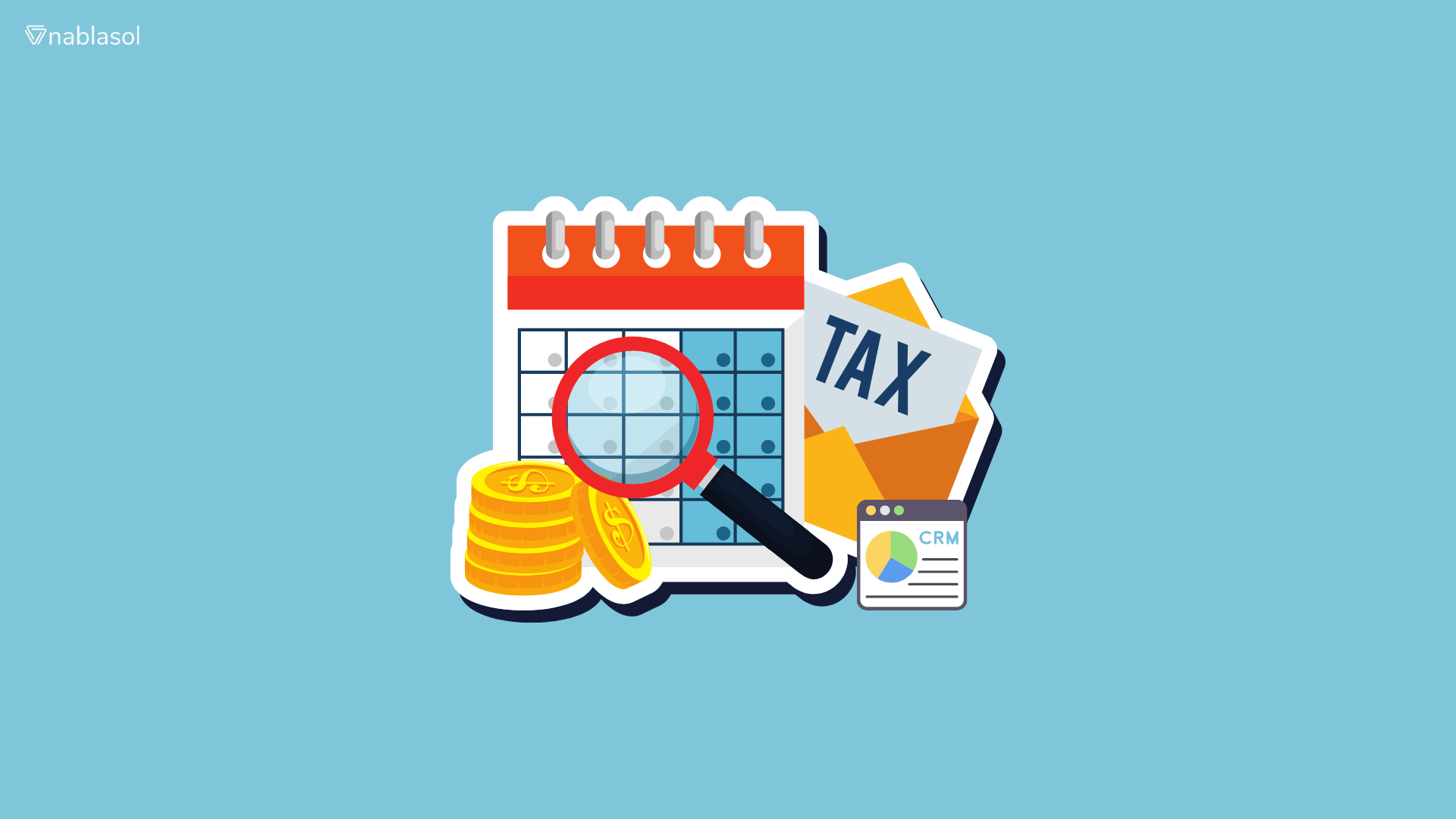In the current competitive environment, the mortgage market has unique challenges that require efficient, client-centered solutions. The transformation of mortgage enterprises depends on implementing CRM solutions. These offer enhanced client interactions and streamlined operations. This article looks at CRM’s crucial position in the mortgage industry and addresses the significant financial gains that can come from using these tools.
- Competitive Environment: The mortgage sector requires innovative strategies due to high competition.
- Particular Difficulties: Mortgage professionals face complex client relationships and many regulatory rules.
- Efficiency Demand: Efficient technologies are crucial to minimize errors in mortgage processing.
- Emphasis on Customer-Centric Solutions: Mortgage companies need customer-focused strategies to improve satisfaction and retention.
- CRM Systems’ Function: CRM systems are key to transforming operations by managing contacts, sales, and productivity.
Understanding CRM in the Mortgage Industry
In the mortgage sector, customer relationship management (CRM) helps deeply understand and nurture client relationships throughout their lifecycle. It extends beyond simple contact management. A robust CRM tool aids mortgage specialists in maintaining detailed client data, from initial contact to post-closing follow-ups. This ensures timely and personalized interactions.
Benefits of CRM for the Mortgage Industry
- Enhanced Customer Service: CRM systems provide mortgage firms with a 360-degree view of their clients. This enables personalized service tailored to individual needs and preferences. Such personal touches significantly boost customer satisfaction and loyalty.
- Streamlined Operations: CRM for the mortgage sector automates repetitive tasks, reducing administrative work. This frees up loan officers to focus more on building relationships and serving clients.
- Improved Lead Management: Mortgage companies may efficiently manage and nurture leads with the use of sophisticated CRM technologies, boosting conversion rates with focused marketing campaigns and follow-up procedures.
Key Features of Mortgage Industry CRMs
- CRM Data Migration: It’s essential for securely transferring current client data into new CRM solutions. CRM data migration tools guarantee the precise and effective migration of historical data while preserving data continuity and integrity.
- Data Migration Planning: To reduce downtime and prevent data loss during the move to a new CRM system, a well-defined data transfer planning procedure is necessary.
- CRM Consulting Services: Choosing the right CRM can be daunting. CRM consulting services from specialized agencies like CRM Consulting Services S.A.S provide expert guidance. They help select and implement CRM solutions tailored to mortgage operations.
Navigating CRM Transition in the Mortgage Industry
It requires a lot of change management involved in upgrading an old CRM solution or switching to a new one. Here are some tips for mortgage companies to successfully handle this change:
- Thorough Training: To optimize the new system’s advantages from the outset, instruct all users on its features and functionalities.
- Ongoing Support: CRM experts may provide after-installation support to fix issues and guarantee that the system keeps up with evolving business needs.
- Integration Capabilities: Workflow efficiency can be greatly increased by a CRM that readily interacts with other platforms and tools used by mortgage companies, such as loan origination systems and compliance software.
Key challenges for CRM systems in the mortgage sector
Here are some of the key challenges when migrating data to a new CRM system in the mortgage sector:
- Data Quality: Mortgage businesses often scatter large amounts of consumer data across multiple systems and databases. Ensuring data accuracy, comprehensiveness, and consistency during the transfer is crucial for maintaining integrity in the new CRM solutions.
- Data Mapping: Mapping data fields from the old CRM to the new one can be challenging. This is especially true if the systems use different data structures and vocabulary. Thorough preparation is necessary to guarantee a smooth transfer of data.
- Legacy Systems Integration: Legacy systems are often used by mortgage companies for crucial tasks like loan origination. Integrating these systems with the new CRM is a major challenge to ensure information exchange and prevent data loss.
- Regulatory Compliance: Businesses must ensure data migration processes comply with all relevant laws and regulations, as the mortgage industry is heavily regulated. This includes the Mortgage Servicing Rules of the CFPB and the GLBA’s data privacy standards.
- User Adoption: The success of a CRM implementation hinges on user adoption. Mortgage experts are sometimes resistant to change, making it challenging to encourage the adoption of new strategies. Implementing change management strategies and providing adequate training are crucial.
- Data Security: Sensitive and confidential monetary information is commonly included in mortgage data. Ensuring data security during migration and in the new CRM solution is essential. It maintains consumer trust and prevents data breaches.
- Timelines and Costs: Data transfer projects may be costly and time-consuming, especially in the mortgage sector where there are a lot of data and stringent requirements. The conversion needs to be properly monitored to stay on track and within budget.
Mortgage businesses should collaborate with seasoned CRM experts, create thorough plans for data transfer, and allocate funds for extensive user training and change management strategies to address these issues. Mortgage companies can reap the benefits of enhanced client connections and operational efficiency by effectively implementing new CRM solutions by placing a higher priority on data quality, security, and user acceptance.
Optimizing CRM Migration in the Mortgage Industry: Strategies to Minimize Data Loss
Develop a Comprehensive Data Migration Plan:
Create a detailed strategy that outlines the entire data migration procedure for the mortgage industry, considering specifics such as data mapping, validation, and testing. Mortgage stakeholders should review and approve this plan to ensure alignment and reduce the risk of data loss.
Conduct a Mortgage-Specific Data Audit:
Do an in-depth review of your present CRM data, paying particular attention to mortgage-specific information, before starting the move. To minimize the delivery of erroneous or unnecessary information and reduce the overall quantity of data, identify and remove any duplicated or irrelevant data.
Implement Data Validation Checks:
Incorporate data validation checks at various stages of the migration process, specific to mortgage data requirements. This involves verifying the integrity of loan and customer data, field mappings, and formats before, during, and after migration. Use scripts or automated tools tailored for the mortgage sector to ensure data accuracy.
Perform Incremental Data Migrations:
Break down the migration into smaller, manageable segments. This approach allows you to verify and test each batch of mortgage data before proceeding, which helps isolate and address any issues in specific batches, thereby reducing the overall risk of data loss.
Uphold Backup and Rollback Plans:
Establish a robust backup plan before starting the migration. Regularly back up your current mortgage CRM data to secure it. Also, have a rollback plan ready to revert to the previous version of your CRM system if significant issues arise during the transfer.
Engage Experienced CRM Consultants with Mortgage Expertise:
Collaborate with CRM specialists who specialize in data migrations for the mortgage sector. These experts can offer direction, best practices, and resources to reduce data loss and guarantee an effortless transition to the new CRM system.
Conduct Post-Migration Testing for Mortgage Data:
Perform thorough testing following the migration to guarantee that any information about mortgages is accurate and full. Verify that all important data, including loan details and client interactions, has been accurately transferred by comparing the migrated data with sources. Deal with any inconsistencies or missing information right away.
Mortgage firms may significantly reduce the risk of data loss during a CRM transfer by implementing these tactics and best practices into effect. A seamless transition to a new CRM system is ensured by robust data validation, efficient backup strategies, and a carefully thought-out migration process, maintaining the integrity and completeness of vital mortgage data.
Conclusion
Implementing a smart CRM system in the mortgage sector is more than just a technological advancement. It’s a calculated decision that will increase client happiness and overall business efficiency. Mortgage companies can achieve growth and success in a competitive market by leveraging the power of CRM solutions, which enable them to additionally meet and exceed customer expectations through improved data management capabilities and superior CRM consulting services.



